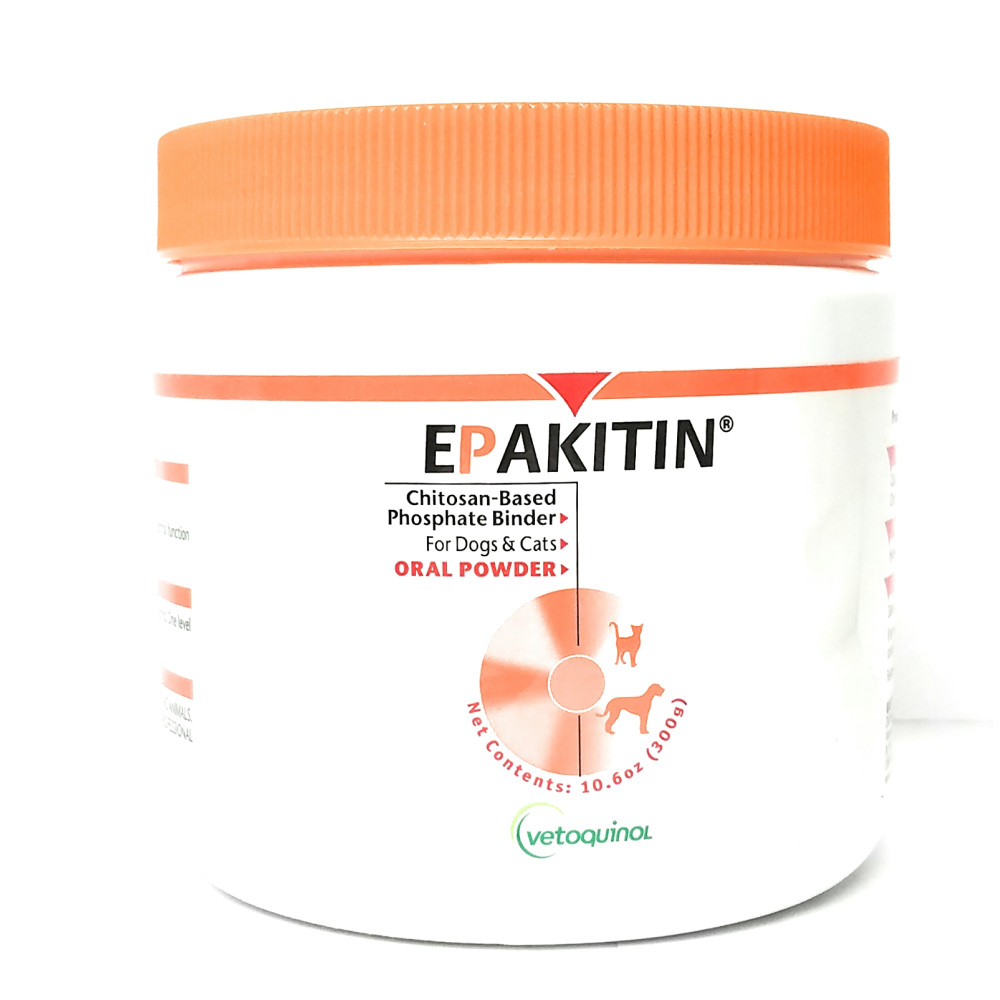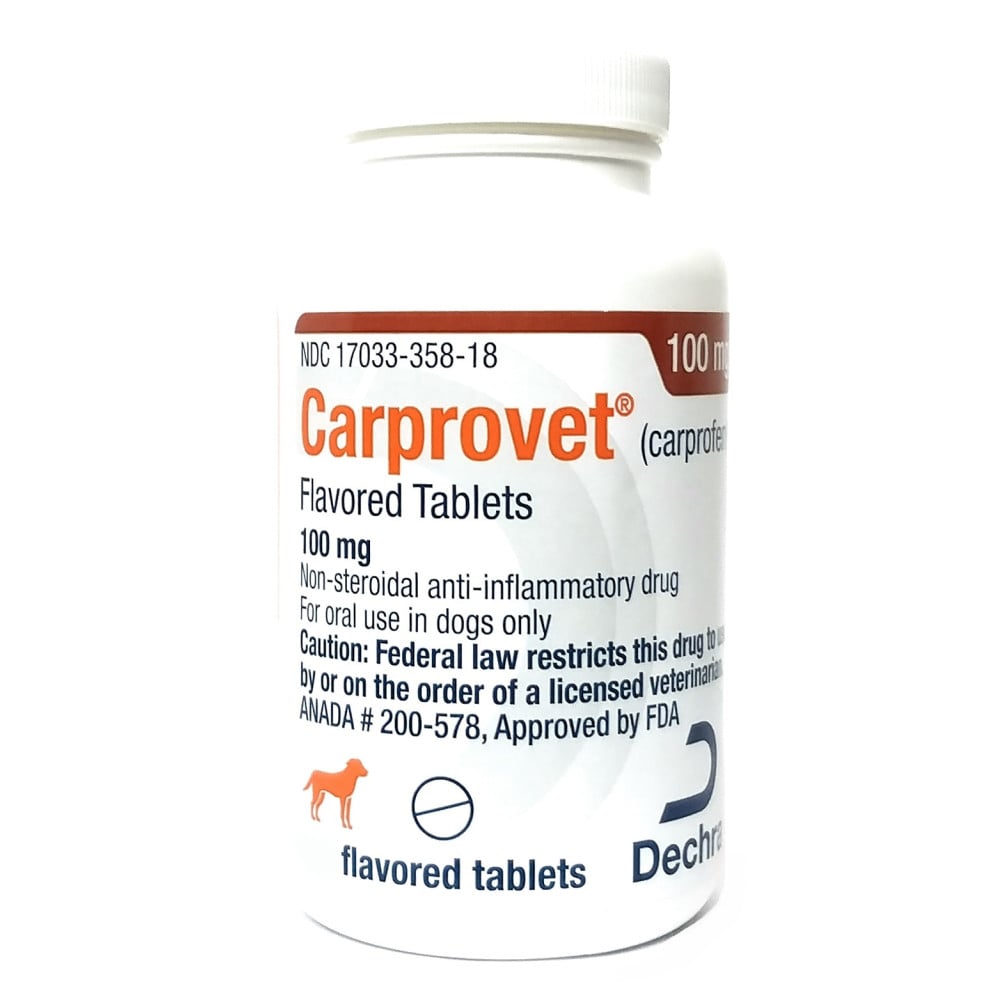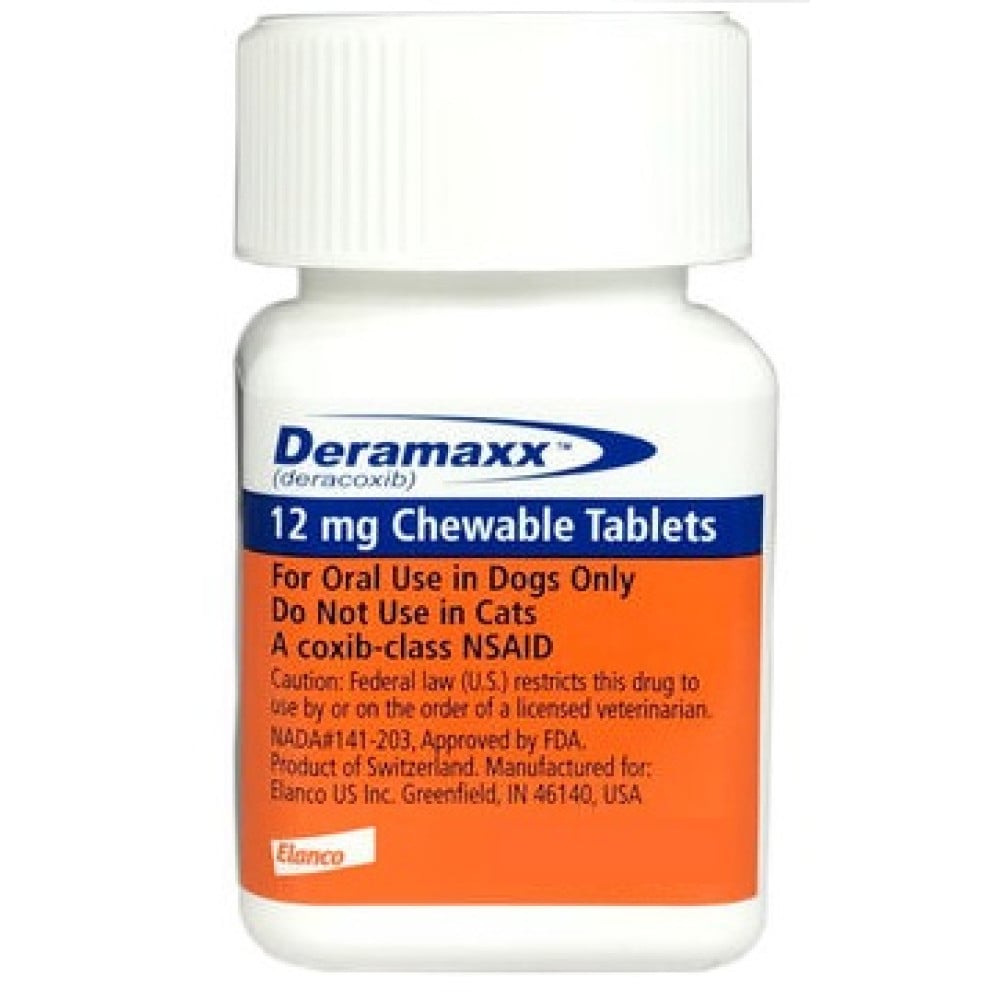Cushing's Syndrome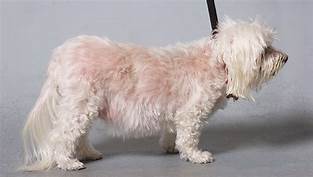
Cushing's syndrome happens when your dog’s body makes too much of a hormone called cortisol. This chemical help them respond to stress, control their weight, fight infections, and keep their blood sugar levels in check. But too much or too little of it can cause problems. Cushing’s disease in dogs is most commonly seen in middle-aged to older dogs—from about 7 to 12 years old. Cushing’s, which is also known as hypercortisolism and hyperadrenocorticism, can be tricky for a vet to diagnose, because it has the same symptoms as other conditions. The key is to let your vet know about anything that’s different about your pet.
In some cases, surgery can cure dogs of the problem. If your pup can’t have an operation due to age or other illnesses, they can take medicine to control their cortisol levels.
Symptoms
The condition mostly affects middle-aged and older dogs, and the warning signs may be harder to spot in the beginning. While not inherently painful, Cushing’s disease in dogs (especially if uncontrolled) can be associated with:
- High blood pressure
- Kidney infections
- Bladder stones
- Diabetes
- Chronic skin and urinary tract infections
- Changes in the liver (vacuolar hepatopathy)
- Increased risk of blood clots
So be aware of these symptoms that can clue you to the possibility of Cushings:
- Drinking more water
- Increased urination
- Increased appetite
- Hair loss or poor regrowth
- Panting
- Pot-belly appearance
- Thin skin
- Blackheads
- Recurrent skin infections
- Recurrent urinary infections
- Sudden blindness
- Lethargy
- Urinary incontinence
- Seborrhea or oily skin
- Firm, irregular plaques on skin (called calcinosis cutis)
Types of Cushing's Syndrome
Many animals can get this condition. People can get it too. There are three major types that affect dogs:
-  Pituitary dependent. This form is the most common, affecting about 80% to 90% of the animals who have Cushing's. It happens when there’s a tumor in a pea-sized gland at the base of the brain, called the pituitary.
- Â Adrenal dependent. This type comes from a tumor in one of the glands that sit on top of the kidneys, called adrenal glands. About 15% of diagnosed dogs will have this type.
- Iatrogenic Cushing’s disease in dogs can be caused by excessive or long-term use of steroids.
Getting Your Dog Diagnosed
There’s no method that’s 100% accurate so the vet will do a few tests to see what may be causing your pet's symptoms and to rule out other health problems. Your vet will start by testing your dog’s blood and urine. These exams can detect diluted urine, urinary tract infections, or problems with a group of enzymes mostly found in the liver and bones called alkaline phosphatase. All of these are common in dogs with Cushing’s.
Since there is no single test that will diagnose 100% of cases, usually they will start with one of these tests, and if it seems likely, the vet will follow up with further tests. In healthy dogs, the pituitary gland produces ACTH. That tells the adrenal glands to make cortisol. When cortisol increases, ACTH gets lower. So when they give your dog the dexamethasone, the pituitary will stop producing ACTH. And the adrenals aren’t prompted to produce cortisol. But if your dog has Cushing’s, cortisol is high all the time. In a normal dog, the dexamethasone should suppress cortisol production. So the 4 and 8 hour tests will be lower.If that doesn’t happen, then your dog may be producing too much cortisol on his own … meaning he has Cushing’s. Here are some of the tests used for diagnosis:
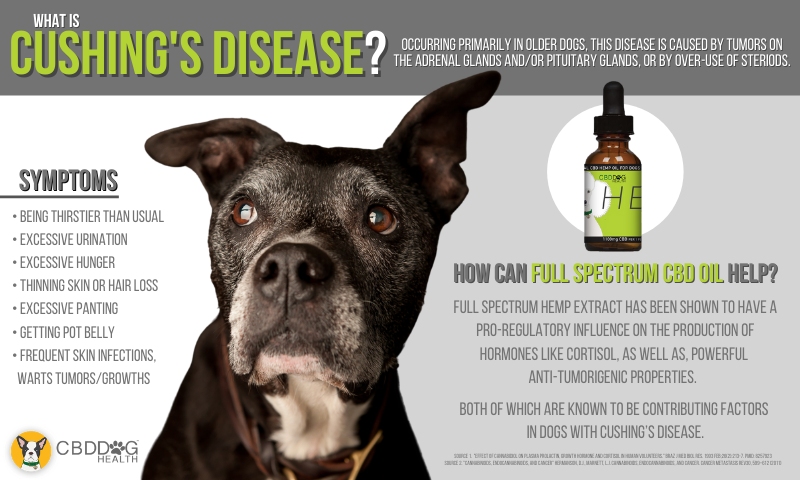
What's the Treatment for Cushing's Disease in Dogs?Â
Most veterinarians treat both adrenal- and pituitary-dependent Cushing's disease with medication. The only way to "cure" Cushing's disease is to remove the adrenal tumor if the disease is adrenal-dependent and the tumor hasn't spread. However, because of the complexity and risks of the surgery, most cases are treated with medication, particularly in older dogs. Surgical techniques to remove pituitary tumors in dogs are being studied, but surgery is not a widely available option at this time.
Although Cushing's is typically a lifelong condition, the disease usually can be managed with medications and it's important for a veterinarian to see the dog regularly and do blood tests to help determine the right dose, which may need to be adjusted periodically.
Frequent blood tests and veterinary checkups are usually required in the first few months after starting treatment and then every few months after that, depending on the dog's response to treatment and tolerance to the medication.
Vetoryl (trilostane), approved by the FDA in 2008 is the only drug approved to treat both pituitary- and adrenal-dependent Cushing's in dogs. This prescription drug works by stopping the production of cortisol in the adrenal glands. Vetoryl should not be given to a dog that
- has kidney or liver disease
- takes certain medications used to treat heart disease
- is pregnant
The drug's most common side effects are poor or reduced appetite, vomiting, lack of energy, diarrhea, and weakness. Occasionally, more serious side effects, including bloody diarrhea, collapse, severe sodium/potassium imbalance, and destruction of the adrenal gland may occur, and may result in death. With Vetoryl, some additional side effects include adrenal insufficiency, shaking, elevated liver enzymes and elevated kidney tests.
Only one other drug, Anipryl (selegiline), is FDA-approved to treat Cushing's disease in dogs, but only to treat uncomplicated, pituitary-dependent Cushing's.
Veterinarians have often used a human chemotherapy drug, Lysodren (mitotane), "off-label" to treat Cushing's in dogs. Lysodren destroys the layers of the adrenal gland that produce cortisol. It requires careful monitoring and can have severe side effects.
"Off-label," or "extra-label," means veterinarians can legally prescribe human drugs to animals for uses not listed on the label, or for other species or at different dosage levels from those listed on the label. But because dogs may react unpredictably to human drugs, so it's beneficial to have treatments available that have been studied in dogs and approved specifically for them. If Cushing’s disease is caused by the excessive use of steroids, the steroid dosage should be carefully tapered down and discontinued. This may result in relapse of the primary disease the steroid was originally used to treat.
If surgery is recommended, pituitary and adrenal tumors can be surgically removed, and if benign, surgery can be the cure.
While starting medication or changing dosages, please be sure to monitor your pet for lethargy, vomiting, decreased appetite, or trouble breathing, and call your veterinarian immediately if any of these signs are noted.How Long Do Dogs with Cushing's Disease Live?
The prognosis for dogs with Cushing’s disease is dependent upon pituitary vs. non-pituitary-dependent Cushing's and whether the tumor is benign or malignant. If malignant then radiation is also possibly prescribed.
Pituitary Tumors
If caused by a small pituitary tumor, medical management can provide long-term control with good quality of life. For pituitary-dependent Cushing’s disease, the median survival time of patients treated with trilostane or mitotane is about two to two and a half years. If a pituitary tumor is large and affects the brain and surrounding structures, the prognosis is poorer.
Adrenal Tumors
Approximately 50% of adrenal tumors are benign, and surgical removal is curative. The other 50% of adrenal tumors are malignant and carry a poor prognosis, especially if they have already metastasized at the time of diagnosis.The median survival time is approximately one year when treated with trilostane. The prognosis is worse in patients with metastasis of the primary tumor, local invasion of the vessels, or a tumor greater than 5 cm in length.
Can You Prevent Cushing's Disease in Dogs?
Unfortunately, you cannot prevent Cushing’s disease if it is caused by a pituitary or adrenal gland tumor. However, you can avoid long-term use of steroids to minimize the risk of developing iatrogenic Cushing’s disease.
Natural Solutions
Some people prefer a more natural solution, so herbal formulas may help relieve common symptoms of Cushings. Encouraging a healthy appetite, reduce stress, relieve excessive urintion, improve skin and fur, and increase energy levels may make a world of difference in quality of life. Keep their diet...- High, digestible protein to prevent muscle wasting
- Low fat to avoid high cholesterol and pancreatitis
- Keep calcium lower to avoid bladder stones
- Feed veggies and fruits
Herbs - Chinese/TCVM Herbs
Gingko biloba is recommended to reduce cortisol levels. Consult with your practioner for dosages. Also recommended are Chinese formulas such as:
Western Herbs
There’s a long list of Western herbs that can help with Cushing’s. Consult a herbalist for the best ones for your dog, as well as dosing.
Herbs To Avoid Avoid these herbs because they stimulate adrenal activity:
Supplements For Cushing’s Disease
There are a number of food supplements that can help with Cushing’s symptoms.
Feeding glandular meats or supplements may help manage your dog’s adrenal function. Feeding a specific organ or gland can often help support the functioning of the matching organ in the body. It may not be easy to get adrenal glands for your dog, but you can give a glandular supplements.
Melatonin: regulates hormones, maintains circadian rhythms and provides antioxidants. Can help maintain coat.
Lignans: HMR lignans extracted from the Norwegian spruce tree convert to enterolactone. This acts as a phytoestrogen in the body. It causes down regulation of estrogen production from the adrenal gland … helping to manage Cushing’s.
Here’s how to dose this combination.
Melatonin
Dogs under 25 lbs – 1.5 mg once or twice daily
Medium to large dogs – 3 mg once or twice daily
Dogs over 100 lbs – 6 mg once or twice daily
Lignans
(dosing recommended by University of Tennessee)
Dogs under 25 lbs – 10 mg daily
Medium to large dogs – 20 to 30 mg daily
Dogs over 100 lbs – 40 mg daily.
Melatonin and Lignans together provide an excellent natural treatment for both Cushing’s and Atypical Cushing’s disease. In fact, Melatonin and lignans help your dog’s system return to normal. What’s even better is that both of these supplements are readily available at your local drugstore. Melatonin helps balance hormones and slow the growth of tumors.
Homeopathy
There are many remedies that may help, depending on your dog’s specific symptoms. Your homeopath will analyze your dog’s case and prescribe the appropriate remedy. Here are some remedies your homeopath may use.
- Quercus Robur: Derived from acorns. Helps with abdominal swelling, breathlessness and varicose veins.
- Adrenalinum: Good for adrenal balance.
- Arsenicum Album: helps with excessive thirst (often due to diabetic complications), digestive upset skin problems .
- Pituitarum Posterium: helps with problems in the pituitary glands.
- Sulphur: helps with pain, frequent urination (especially with diabetic complications of Cushing’s), skin and liver problems.
- Chelidonium Majus:Â Â for liver, bile, and digestive issues.
- Hepar Sulfuris Calcareum:Â for skin problems, abdominal distention or bloating, and liver problems.
- Mercurius Solubilis: for digestive issues, jaundice, enlarged liver, vertigo, intense thirst, memory and thinking issues, and belching.















